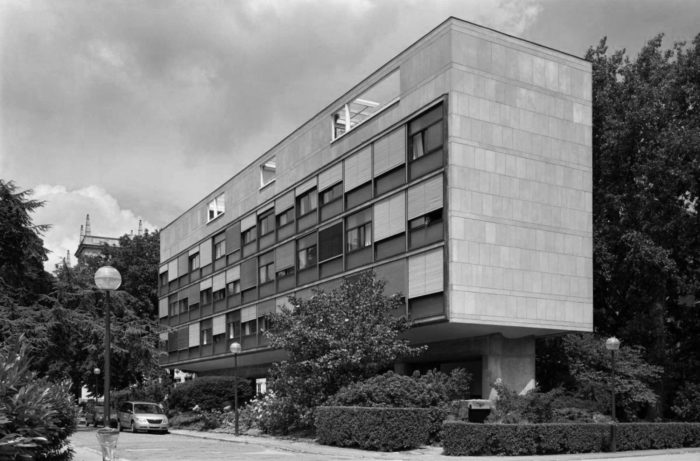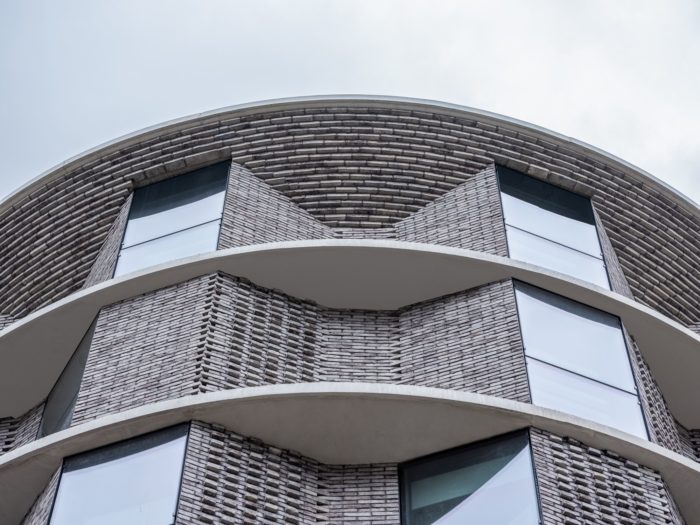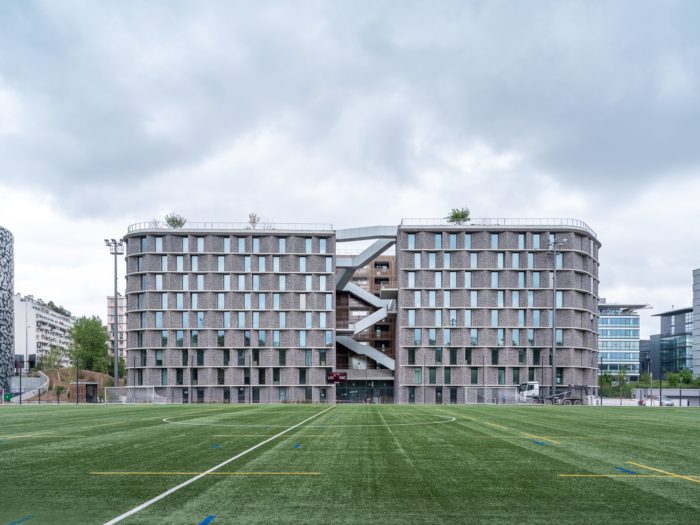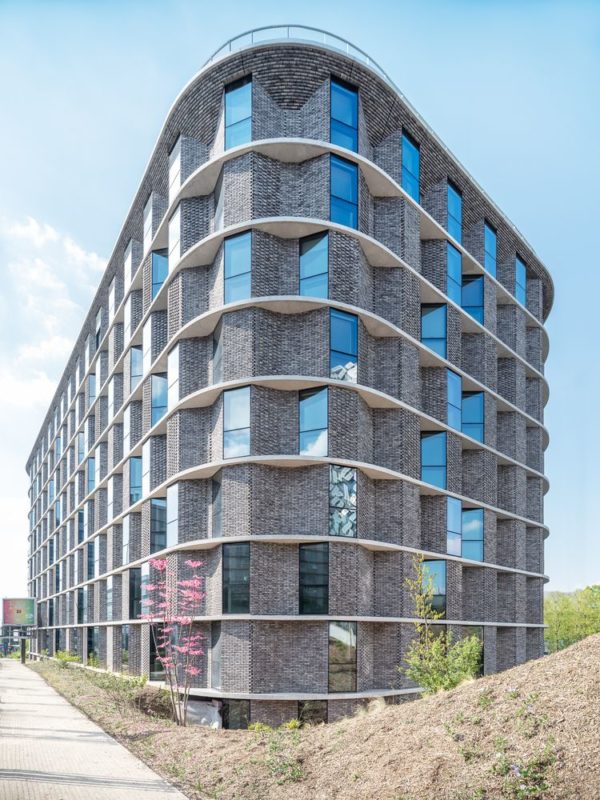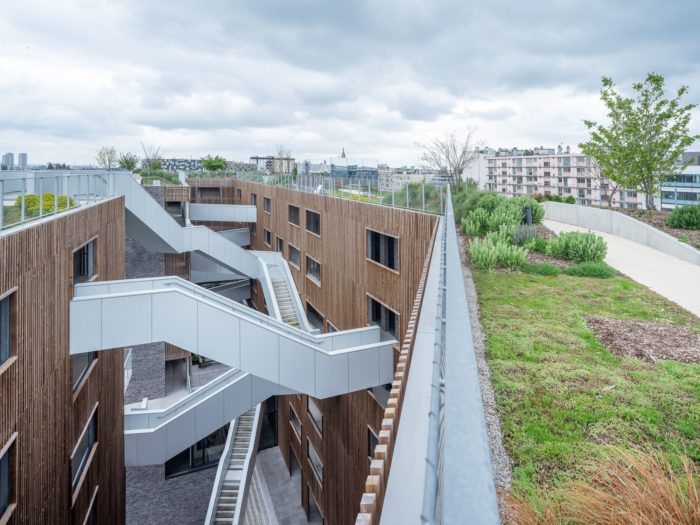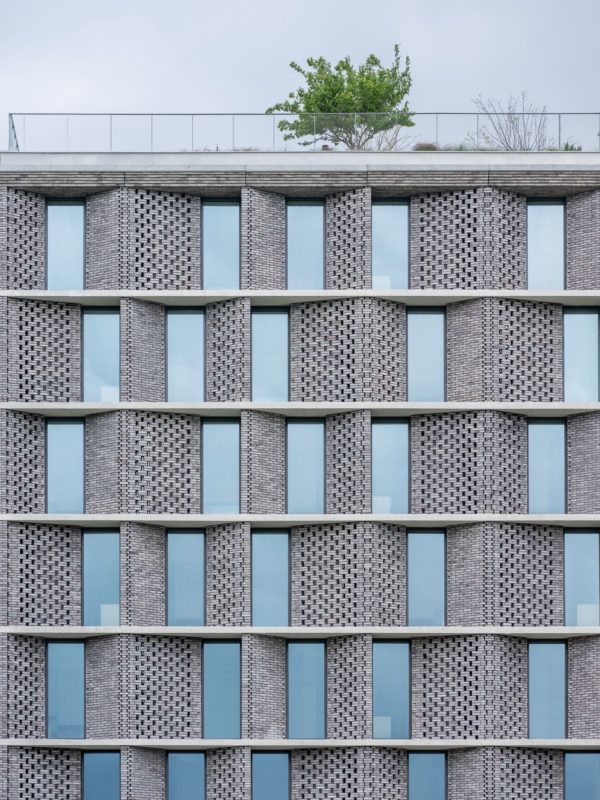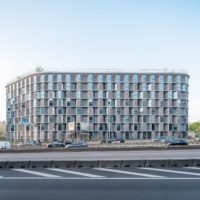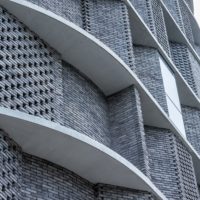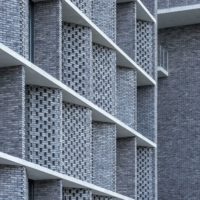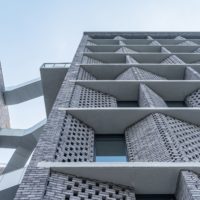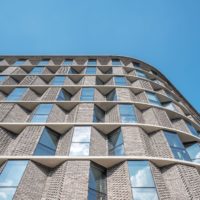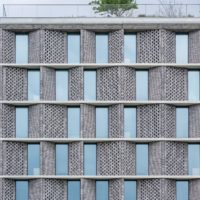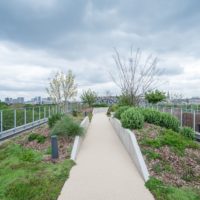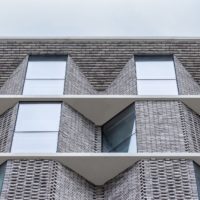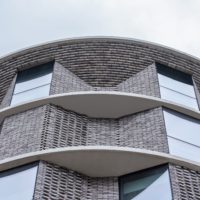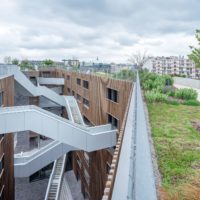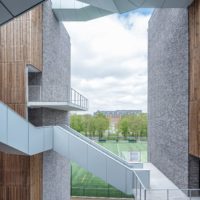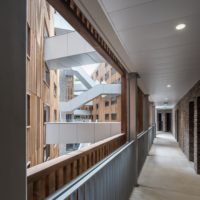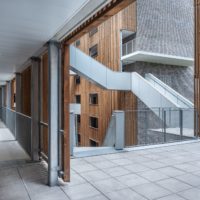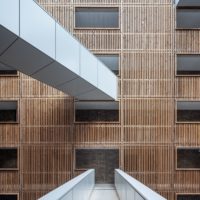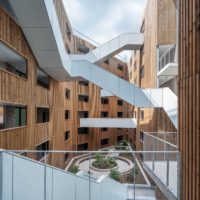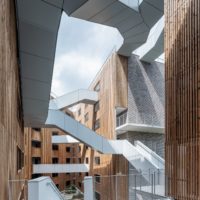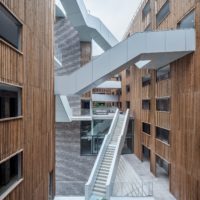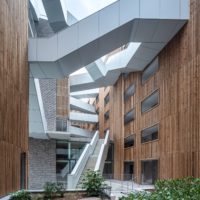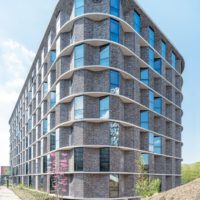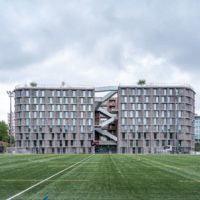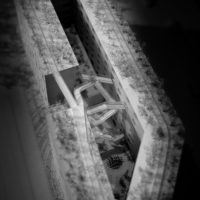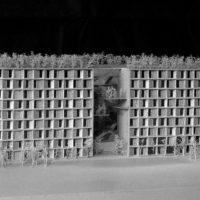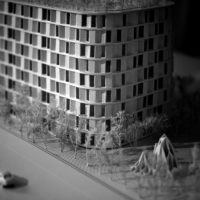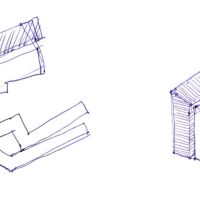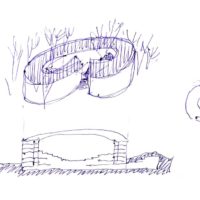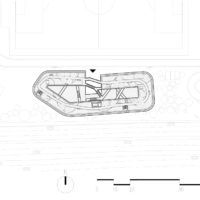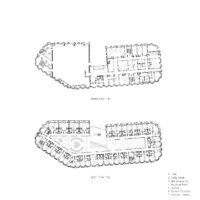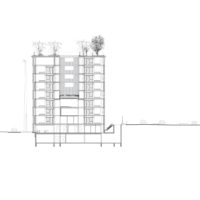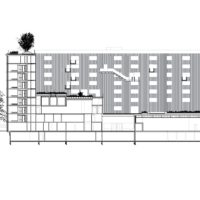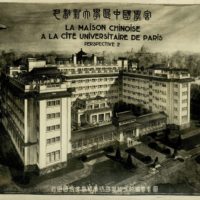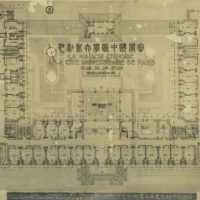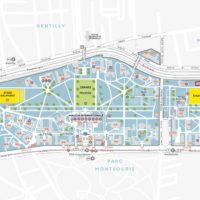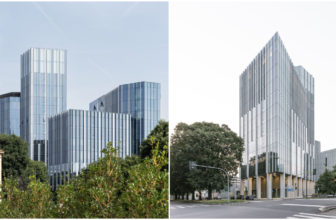Maison de la Chine Dorms is located in the Cité Internationale Universitaire de Paris (CIUP) in the 14th Arrondissement of Paris. The university city was established to provide housing primarily to international students in Paris in 1925 and has now more than 40 dormitory buildings named after different countries. It is well known for its remarkable collection of architecture, such as the ‘Collège Néerlandais’ (The Netherlands College,1926) designed by Willem M. Dudok, the ‘Pavilion Suisse’ (The Pavilion of Switzerland, 1930) by Le Corbusier, the ‘Maison du Brésil’ (Home of Brazil,1954) by Lucio Costa and Le Corbusier, and the ‘Pavilion de L’Iran’ (Pavilion of Iran,1969) by Claude Parent.
In 1930, Chinese architecture student Yu Ping-Lih in France proposed a Maison Chinoise, or Zhongguo Xueshe in Chinese, as his diploma project since the CIUP had allocated a lot to China without charge. In the year before, the Association for the Realization of Maison Chinoise in the Cité Universitaire de Paris was organized by Chinese students from various universities in Paris and published a manifesto pleading with the Chinese government then to fund such an important project but without success.
Yu’s drawings are now kept in the archive of Southeast University in Nanjing. Finally, in 2017, a design competition was held to produce a proposal for the House of China with the official name of Fondation de Chine. The scheme of FCJZ x CAAU was selected as the winning entry from a group of five Sino-French teams.
Fondation de Chine, commonly known as Zhongguo Xueshe or Maison de la Chine, occupies a rather narrow piece of land on the south edge of the CIUP, with a sports field bordering its north and the Boulevard Peripherique (the Ring Road) to its south.The initial idea for this facility was to compose the 300 single-occupation-dormitories with a 500-person cultural activity hall into a conceptual village and then, to better fit onto the site, simplified to a loop formation, after studying the extended family housing type in Southern China Tu Lou, which means “earth building” in Chinese since it is typically built with rammed earth and has another name of Da Yuan Lou or “big round building”, for its typical circular configuration.
Maison de la Chine Dorms’s Design Concept
Le Corbusier’s design for the Pavilion Suisse was centered around the concept of healthy living, which we value just as much today. Therefore, with Tu Lou as our main inspiration, we arranged the dormitory rooms in the shape of an irregular, open ring around a central courtyard, in order to allow student life to unfold in a pleasing natural environment. The surrounding area and the rooftop of the building are designed as gardens, while the staircase in the central courtyard further links a series of platforms together, creating a vertical landscape in the heart of the building. After approving our design proposal, the client named poetically the building He Yuan, meaning the Garden of Harmony.
To achieve a distinct genetic connection with Chinese culture in the architecture through construction not through style or image as in Yu’s design in 1930, grey clay bricks are deployed as the main material on the exterior façade; through various brick-laying techniques inspired by the traditional bonds in ancient China including Die Se or cantilevering of bricks, we will be able to achieve porosity, relief in the wall, as well as projected eaves so that to demonstrate details and crafts as expressive architectural forms.
Simultaneously, the undulation on the building facade is a measure to express the individuality of rooms thus their residents while addressing the issue of noise pollution from the Peripherique. A wood grating lines the entire inner façade around the courtyard; together with the clay bricks on the outer facade, such material composition reiterates once more the ancient Chinese definition of architecture as Tu Mu or earth and wood while remaining a local project since the bricks on the building were hand-made in Europe.
Project Info:
Area:8287 m²
Year:2023
Photographs: Fangfang Tian
Structure Design: AEDIS Ingénierie
MEP Design: S2T
Sustainability: Le Sommer Environnement
Landscape Desgin: Base
Acoustics Consultants: Lamoureux acoustics
General Contractor: SICRA Île-de-France
Atelier Fcjz Design Team: Yung Ho Chang, Lijia Lu, Cheng Yishi, Simon Lee, Meng Yao
Coldefy Design Team: Thomas Coldefy, Isabel Van Haute, Marc Franco, Marianna Guarino, Daniel Katz, Marceau Portal, Yizhou Hong, Ettore Musso, Beatrice Congiu, Marco Proietti, Vincent Vaulot, Sophie Graux, Zoltan Neville, Zhuo Wang
Client: The Cité Internationale Universitaire de Paris (CIUP)\ Beijing Capital Group
Kitchen Designer: Behal
Scenography: Peytavin
Costing: Vanguard
City: Paris
Country: France
- © Fangfang Tian
- © Fangfang Tian
- © Fangfang Tian
- © Fangfang Tian
- © Fangfang Tian
- © Fangfang Tian
- © Fangfang Tian
- © Fangfang Tian
- © Fangfang Tian
- © Fangfang Tian
- © Fangfang Tian
- © Fangfang Tian
- © Fangfang Tian
- © Fangfang Tian
- © Fangfang Tian
- © Fangfang Tian
- © Fangfang Tian
- © Fangfang Tian
- © Fangfang Tian
- © Fangfang Tian
- © Fangfang Tian
- © Fangfang Tian
- Pavillon Suisse by Le Corbusier
- © Fangfang Tian
- model, Courtesy of Atelier FCJZ. Image Courtesy of Atelier FCJZ
- model, Courtesy of Atelier FCJZ. Image Courtesy of Atelier FCJZ
- Sketch, Courtesy of Atelier FCJZ
- Sketch Diagram, Courtesy of Atelier FCJZ
- Plan, ourtesy of Coldefy+Atelier FCJZ
- Plan, ourtesy of Coldefy+Atelier FCJZ
- Section, ourtesy of Coldefy+Atelier FCJZ
- Elevation, ourtesy of Coldefy+Atelier FCJZ
- Maison Chinoise designed by Yu Ping-Lih_Aerial view. Image
- Maison Chinoise designed by Yu Ping-Lih_Typical floor plan . Image
- Diagram


